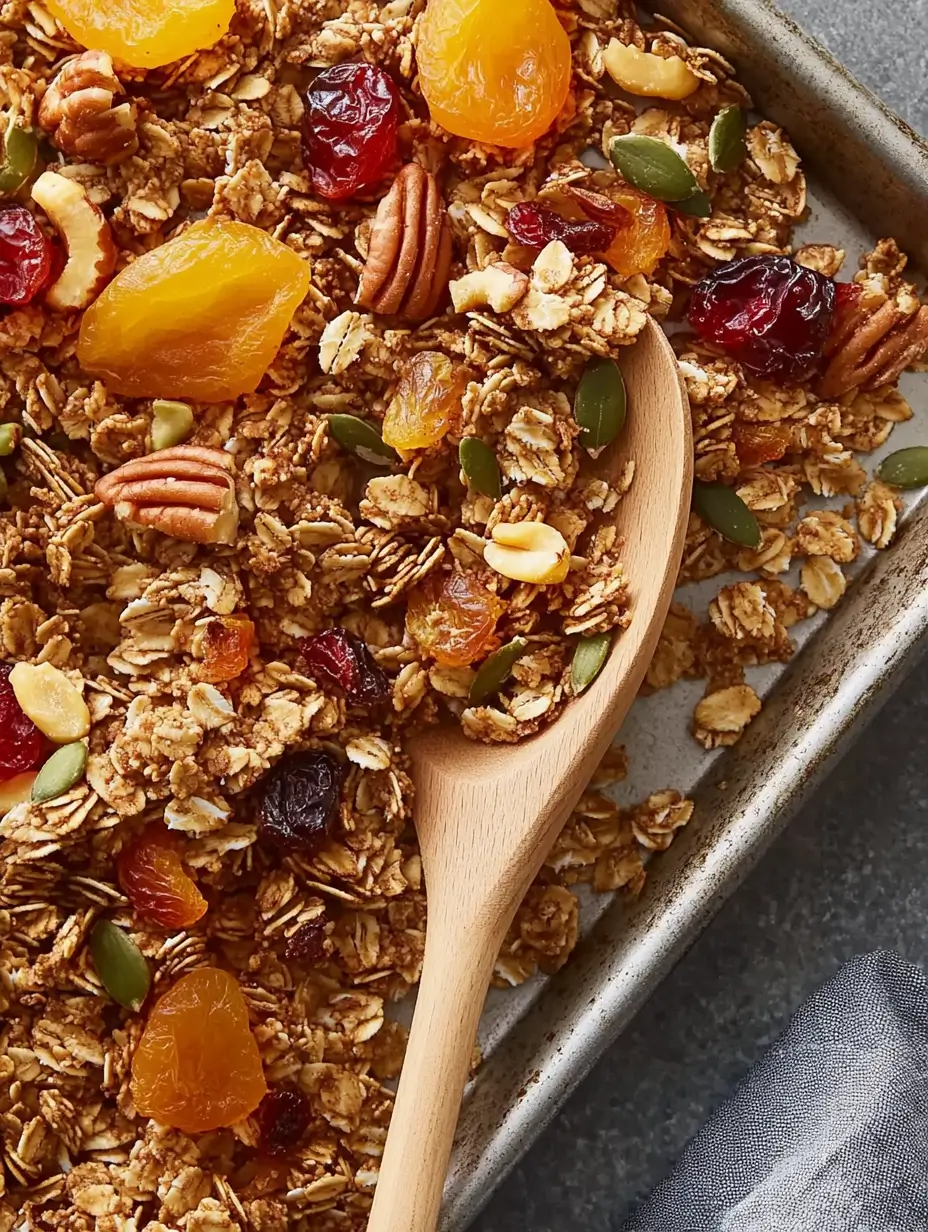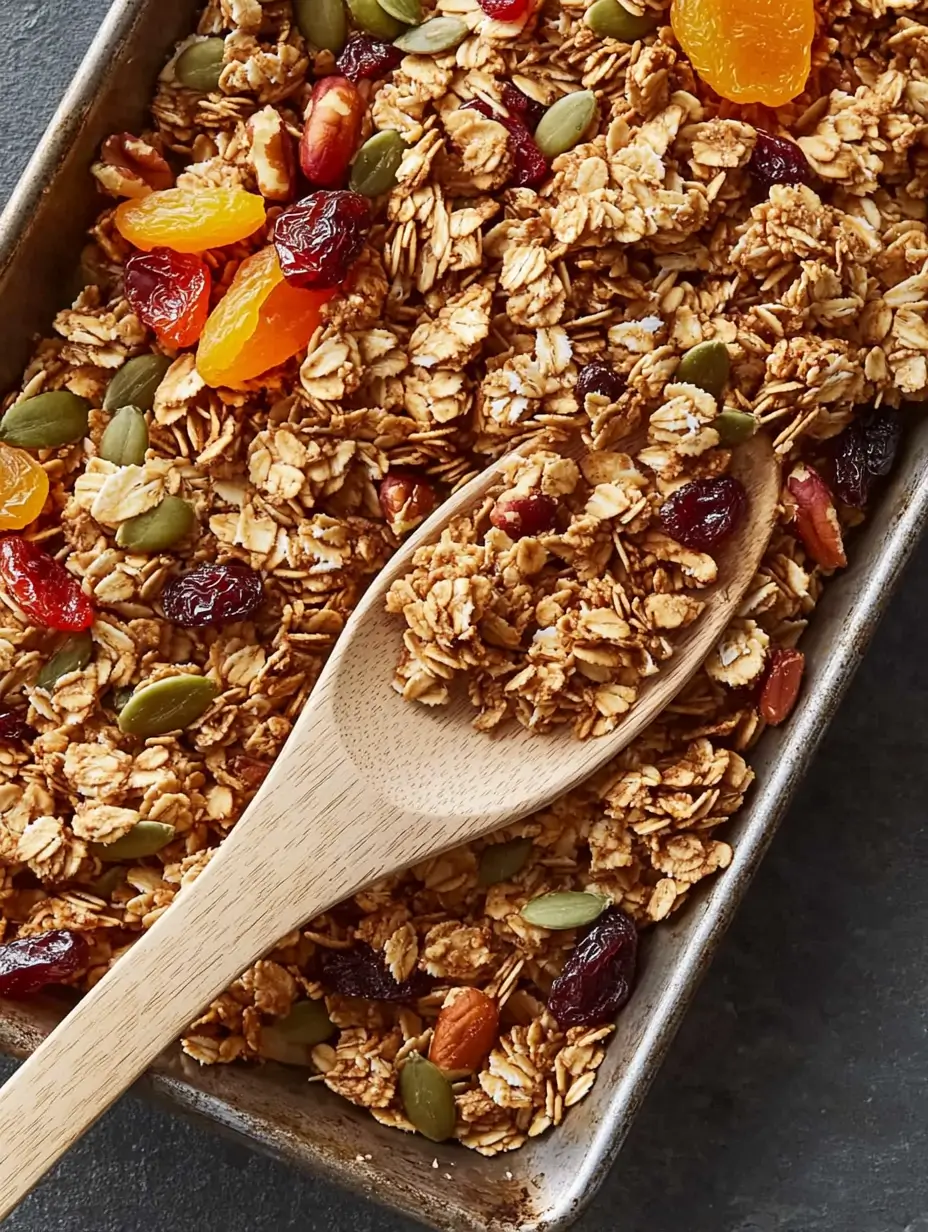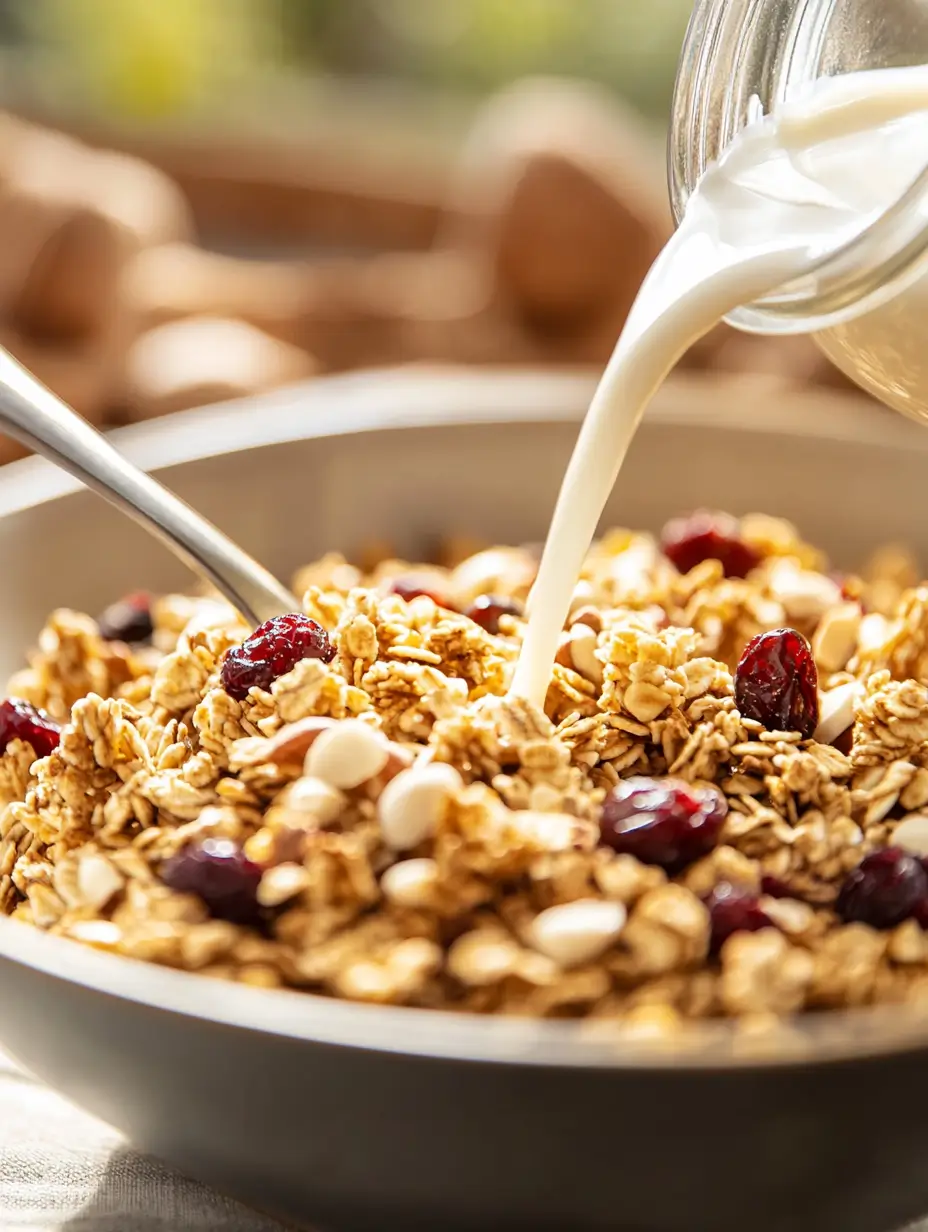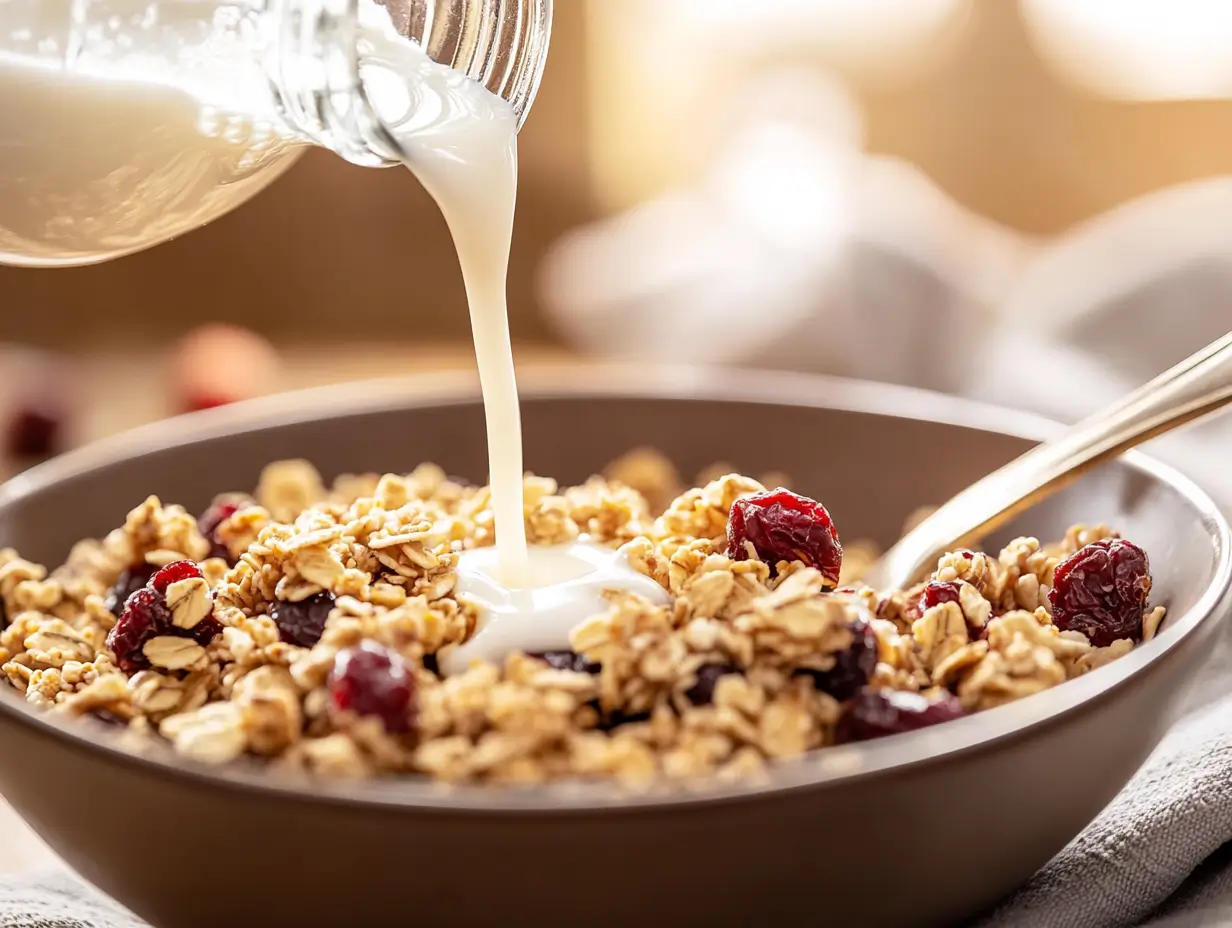Granola has long been touted as a healthful and convenient option for breakfast or snacking, but it generally packages on a surprising amount of sugar. Granola nutritionistically can rival some desserts. In this article, we will draw apart why granola is so high in sugar, its ingredients, and suggestions for how to find the best possibility at your local outlet. By the end, you’ll have a clear understanding of how to enjoy granola without overloading on sugar.
The Popularity of Granola and Its Perceived Health Benefits
The Health Halo Effect Around Granola
Granola’s “health halo” is its most misleading feature. Packaging uses terms like “natural” or “organic” to suggest it’s guilt-free, while hiding its high sugar content and calorie-dense ingredients. Many don’t realize much of the sweetness comes from added sugars, not just honey or dried fruits. This clever marketing often masks granola’s true nutritional shortcomings.
Breaking Down Granola Ingredients
The Role of Sweeteners in Granola
One explanation for granola’s excessive amount of sugar is the number of sweeteners that it contains; from white sugar to brown sugar, honey then it goes to maple syrup and even agave nectar, all these being used to make it flavorful and textured. They are not nearly as natural as they sound, though, bringing huge amounts of sugar to the product. Most of all, these additives seem to be sweet ingredients for the granola, but they also bind granola clusters and stabilize shelf life; therefore, granola without them is not that much favored by many consumers. However, this sugar means that a tiny serving of granola has many more calories and sugar than most would believe.
Other High-Sugar Additions
Aside from sweeteners, granola often includes sugary extras like dried fruits, chocolate chips, and yogurt-coated nuts. Dried fruits, for instance, are naturally sweet, but many brands also coat them in additional sugar or syrup to boost flavor. Over time, they may add up little by little to make granola get such a treatment as dessert prepared for breakfast.
In fact, there are many such case-scenarios that granola also contains candy-like stuff, blurring the line between healthy and sugary-as-snack. With this, it is not surprising that some people will be confused about why granola has high sugar levels when it looks so similar to a snacking item.
The Role of Processing in Sugar Content in Granola

Store-bought granola often undergoes extensive processing, which significantly increases its sugar content.It’s a stark contrast between homemade granola and that found in commercial stores; the former is much more flexible, with every addition being strictly controlled, while the latter is engineered to be appetizing to everybody; it has none of the flavors the homemade version carries, thus generally promising to be just a supplement rather than a replacement for nutritious food.
Why Is Granola So High in Sugar During Manufacturing?
Granola’s high sugar content stems from its manufacturing process. Sugar acts as both a preservative and a binder, giving granola its crunch and ensuring a consistent flavor. Sweeteners like syrups evenly coat the ingredients, enhancing taste while keeping production costs low. Without added sugars, lower-quality ingredients might taste bland, prompting manufacturers to rely on sugar to make granola more appealing and marketable.
Additives and Hidden Sugars in Packaged Granola
In fact, these kinds of manufactured granola bars tend to carry added sweeteners, some of which are nearly concealed with fancy names such as malt syrup, cane juice, or glucose syrup. These raise the sugar levels and act even further on granola’s addictive properties. With added flavor Boosters and artificial ingredients, the sugars put the reader under an impelling urge to have more products.
Another issue is that of highly processed dried fruits, usually coated with sugars to improve flavor and prolong its shelf life. These include chocolate chips, yogurt-covered nuts, and caramel bits-norms in thousands of commercial granolas. The list goes on. These transformations may make granola pretty appealing and tasty in viewing, but this diverts granola from its original identity as a simple food that is nourishing.
How Homemade Granola Differs

In contrast, homemade granola allows you to control the sugar content, making it a much healthier alternative. By swapping refined sugars for natural sweeteners like pureed fruits or a small amount of honey, you can create a version that’s just as tasty but far better for you. Homemade granola also gives you the flexibility to include nutrient-rich ingredients, like unsweetened coconut flakes, chia seeds, or roasted nuts, instead of sugar-filled extras.
The Importance of Label Reading
For those who prefer store-bought options, reading the label is critical. Start by checking the ingredient list—ingredients are listed in descending order by weight, so if sugar or syrups appear near the top, you know it’s a significant component. Also, pay attention to serving sizes; many granola brands list small portions, which can be misleading. A product labeled as containing “10 grams of sugar per serving” may seem moderate, but if the serving size is only 1/4 cup, it’s easy to consume double or triple that amount in one sitting.
When selecting granola, look for terms like “unsweetened” or “no added sugar” and choose products with minimal processing. Low-sugar brands often emphasize whole, recognizable ingredients like oats, nuts, and seeds without unnecessary extras. However, even these options require careful scrutiny to avoid hidden sugars.
Why Understanding Processing Matters
Knowledge on the effect that processing has on sugar content equips consumers to make informed choices. Granola can be healthy, but not every product is as good as the next. Check out ingredient lists and go for the less-processed or homemade varieties and enjoy granola without the sugar load. After all, the reason why granola is so loaded with sugar often comes down to convenience versus nutrition in terms of trade-offs. A little work can help you find a balance that works for you.
Understand how processing affects sugar content so that you can make informed decisions about what you eat. Granola can be a healthy addition to any diet, but not all granolas are created equal. Watch those ingredient lists and select the less processed or homemade varieties, and enjoy granola without the sugar overload. After all, the reason granola is so high in sugar comes down to convenience versus nutrition trade-offs. A little work will get you there, however.
How Granola Fits into Modern Diets

Granola in Breakfast and Snacks
Granola is a versatile food that fits into many meals and snacks, but its sugar content can be a hidden drawback. Adding granola to yogurt or milk is assumed healthy; such assumptions may not be complete, considering the sugar content. A serving often tends to have as much sugar in it as some candy bars. Throwing sweetened yogurt or fruits only loads more sugar onto it and creates a high-calorie meal.
Those who like smoothies may top them off with granola for that extra crunch. Sadly, the sugar from guides like granola, mingled fruits, and other add-ons can add weight to the scale. Portions and combinations should, therefore, be easily monitored.
Granola in Fitness and Weight Loss Regimens
Granola is also marketed as a fitness food, but its high sugar content can undermine weight loss and health goals. While granola bars are promoted as convenient snacks or meal replacements, they often contain hidden sugars that counteract their supposed health benefits.
Athletes and fitness enthusiasts may use granola as an energy source, but its sugar can lead to energy spikes and crashes. This rollercoaster effect is why some people feel hungry again shortly after eating granola. When considering why granola is so high in sugar, it’s essential to recognize how it fits—or doesn’t fit—into a balanced diet.
The Impact of Sugar on Health
Sugar and Caloric Density
The high sugar content of granola can be attributed to its calorie-dense contents. This calorie density is further amplified because granola has a high added sugar content, making it not one of the best choices for a Weight Watcher. Small portions may still be capable of carrying hundreds of calories thanks to sweeteners, oils, and extras like chocolates or dried fruits.
Frequent eating of granola without point of portion control could cause one to consume it a bit on the overindulging side. This makes it easy to exceed daily sugar and calorie recommendations without even realizing it. For a deeper dive into creating healthier granola options, you can check out this vanilla nut granola recipe for inspiration.
Hidden Sugars in Packaged Granola
Many packaged granolas contain hidden sugars that aren’t immediately obvious. While sweeteners like honey and maple syrup might seem healthier, they are still sugars contributing to your daily intake. Additionally, some brands use less obvious names like “cane juice” or “malt syrup,” which can mislead consumers into thinking the product is less sugary than it is.
A fast point at the nutrition sticker can show an incredible amount of sugar per serving-off sometimes more than 20 grams! In reading the items thoroughly and choosing unsweetened or home-made versions, you could keep away from such additives.
Potential Health Risks of Consuming Sugary Granola
Excessive sugar consumption, including from granola, can lead to several health issues. Regularly eating sugar-laden granola can increase the risk of developing obesity, type 2 diabetes, and heart disease. Furthermore, the sugar spikes and crashes associated with high-sugar foods can negatively impact energy levels, leaving you feeling tired or irritable.
Switching to low-sugar or homemade granola options can help mitigate these risks while still allowing you to enjoy this popular food.
Choosing Healthier Granola Options
How to Identify Low-Sugar Granola
Reading labels carefully is the first step to finding healthier granola. Look for products whose first ingredients are whole grains, nuts, and seeds. The sugar content should ideally be less than 6 grams per serving. Words like “unsweetened” or “no added sugar” are your friends when choosing the best option.
Brands that use natural sweeteners sparingly, such as stevia or monk fruit, can also be good alternatives. However, always verify the ingredient list, as even “healthy” brands sometimes include hidden sugars.
For more tips, check out this guide on granola-making tips to make smarter choices.
Making Your Own Granola at Home
Homemade granola is the easiest way to control sugar levels and include only the ingredients you love. By using minimal sweeteners and focusing on natural additions like nuts, seeds, and unsweetened dried fruits, you can enjoy a healthier version without sacrificing taste.
You can also make different flavors of granola for yourself-from cinnamon to vanilla to coconut flakes, the list is endless. It is much cheaper than buying prepared granola. For ideas, browse this article about crunchy granola tips.
FAQs
Why Does Store-Bought Granola Have So Much Sugar?
Most of the questions that people usually ask are why granola is high in sugar. The store-bought granola is supposed to be sweet and should remain good for a period with sugar in granola. Using sweeteners like syrup, honey, sugar, etc. helps to attract many people to granola and also binds the ingredients together. They can also include many sweetened extras like chocolate chips or coated fruits. This is done in order to flavor the granolas and bring some texture into them. This is, however, a costly measure in terms of nutrition.
Are There Sugar-Free Granola Options?
Yes, but they can be tricky to find. Many brands now offer “no added sugar” or “low-sugar” varieties, which are better choices for health-conscious consumers. These products rely on the natural sweetness of nuts, seeds, and unsweetened dried fruits. Reading the label is essential, as some products still contain hidden sugars. For ultimate control over sugar content, homemade granola remains the best option.
What Are the Best Sugar Substitutes for Homemade Granola?
When making your own granola, you can replace refined sugar with natural options like mashed bananas, unsweetened applesauce, or a small amount of maple syrup. These substitutes provide a touch of sweetness without overwhelming your recipe. Experimenting with spices like cinnamon or vanilla extract can also add flavor without adding sugar.
How Much Granola Is Healthy to Eat Daily?
Portion sizes matter! Despite the healthiest granola, if you take too much of it, there might be a problem. A serving between 1/4 and 1/2 cup is ideal, which you then pair with a protein source like unsweetened yogurt or plain milk. In this way, you will be able to get the benefit of granola while managing your sugar intake.

